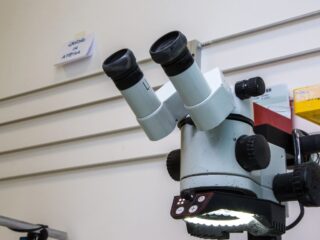
Optical instruments, which include devices like microscopes, endoscopes, and ophthalmic tools, have evolved significantly, enabling higher precision, minimally invasive procedures, and better patient outcomes. These innovations are pushing the boundaries of what’s possible in medical care, allowing healthcare professionals to see and analyze the human body in ways that were once unimaginable. Let’s explore eight groundbreaking innovations in optical instruments that are shaping the future of healthcare.
High Precision Calibration Tools
Precision is essential in healthcare, especially when it comes to the calibration of optical instruments. Tools like the High Precision Caliball 1 have emerged as vital assets in this regard. These calibration spheres ensure the exact alignment of optical systems, maintaining the accuracy of diagnostic tools and reducing errors in sensitive measurements. With devices like the Caliball 1, clinicians can achieve ultra-fine calibration standards, leading to better diagnostic accuracy and, ultimately, more effective patient care.
3D Optical Coherence Tomography (OCT)
Optical Coherence Tomography (OCT) has been a game-changer in ophthalmology, allowing doctors to capture high-resolution, cross-sectional images of the retina. Now, with 3D OCT, this technology has reached new heights. 3D OCT enables a more comprehensive view of retinal layers, which is invaluable for detecting conditions like glaucoma and age-related macular degeneration (AMD) early on. The enhanced imaging capabilities improve treatment plans, and because it’s non-invasive, 3D OCT provides patients with a comfortable experience.
Multi-Spectral Imaging (MSI) in Dermatology
Multi-spectral imaging has opened doors in dermatology, allowing doctors to assess skin conditions without requiring invasive biopsies. MSI captures images across different wavelengths, revealing details about skin composition and underlying abnormalities. It can detect early indicators of skin cancer or track the progression of chronic skin conditions. This technology minimizes discomfort for patients and enables dermatologists to diagnose and treat skin issues more effectively.
Digital Endoscopes with High-Definition Imaging
Endoscopy is a critical procedure for diagnosing and treating gastrointestinal and other internal issues. The development of digital endoscopes with HD imaging has dramatically improved this field. These devices offer clear, high-resolution visuals that enhance a physician’s ability to identify issues accurately. Some of the latest models even incorporate narrow-band imaging, which uses specific light wavelengths to highlight blood vessels and mucosal structures, aiding in early cancer detection.
Autofluorescence Bronchoscopy
Lung cancer detection is often challenging due to its asymptomatic nature in the early stages. Autofluorescence bronchoscopy leverages fluorescent light to detect abnormal cell changes in lung tissues.

This technology illuminates precancerous and cancerous cells, which helps in identifying tumors that may not be visible with conventional white-light bronchoscopy. Autofluorescence bronchoscopy provides doctors with a highly effective tool for lung cancer detection and treatment, improving patient prognosis.
Laser-Assisted Cataract Surgery Instruments
Cataract surgery is one of the most common surgeries worldwide, and laser-assisted instruments have made this procedure safer and more precise. These devices employ laser technology to create incisions, soften the cataract, and prepare the lens for extraction. By enhancing control and accuracy, laser-assisted instruments reduce the risks associated with traditional surgical tools, helping ophthalmologists deliver optimal results and faster recovery times for patients.
Holographic Microscopy for Real-Time Cellular Analysis
Traditional microscopes capture flat, 2D images, but holographic microscopy is changing that. This innovation allows scientists and clinicians to view cells in 3D and monitor them in real-time. This is especially valuable for research into cellular behavior, cancer progression, and immune responses. Holographic microscopes can track cell motility, division, and interaction without requiring dyes or stains, thus preserving cell viability and providing more accurate biological insights.
Portable Retinal Imaging Devices
Portable retinal imaging devices are making eye exams and diagnoses possible even outside of conventional healthcare facilities. These compact, handheld devices offer detailed imaging of the retina, allowing early detection of eye diseases like diabetic retinopathy and macular degeneration. Their portability also enables widespread screening, bringing essential eye care to individuals who might otherwise go without.
Optical Devices in Healthcare: A New Era of Precision and Accessibility
The evolution of optical devices has significantly impacted healthcare, enhancing both the quality and accessibility of medical services. Instruments such as the convex lens play a crucial role, with its curved surface capable of focusing light to a focal point that assists in magnifying details and providing clear imaging. This fundamental property of convex lenses has paved the way for precise optical instruments that aid in various diagnostic and treatment processes.
Optical devices work on principles like the refractive index, which measures how much light bends as it passes through different media. By utilizing lenses with carefully calculated focal lengths, these devices allow healthcare professionals to achieve sharper images, necessary for procedures requiring high accuracy, such as ophthalmology and microsurgery.
Moreover, devices that include a second lens, such as those found in compound microscopes, enable further magnification, allowing practitioners to observe intricate details at a microscopic level. Optical instruments mimicking the human eye—with its dynamic focusing capabilities—enhance imaging technologies, offering more realistic visuals and making procedures less invasive.
Final Thoughts
The innovations in optical instruments for healthcare are revolutionizing medical practice and patient care. With optical advancements, healthcare professionals are equipped to provide more accurate diagnoses, conduct safer procedures, and expand healthcare access to previously underserved areas.













